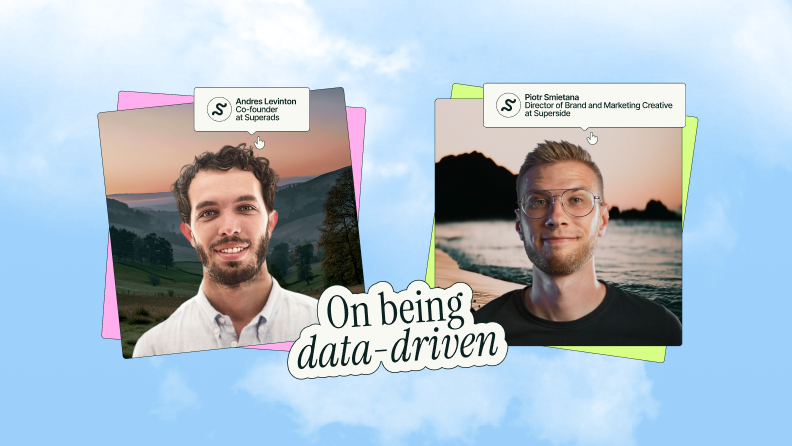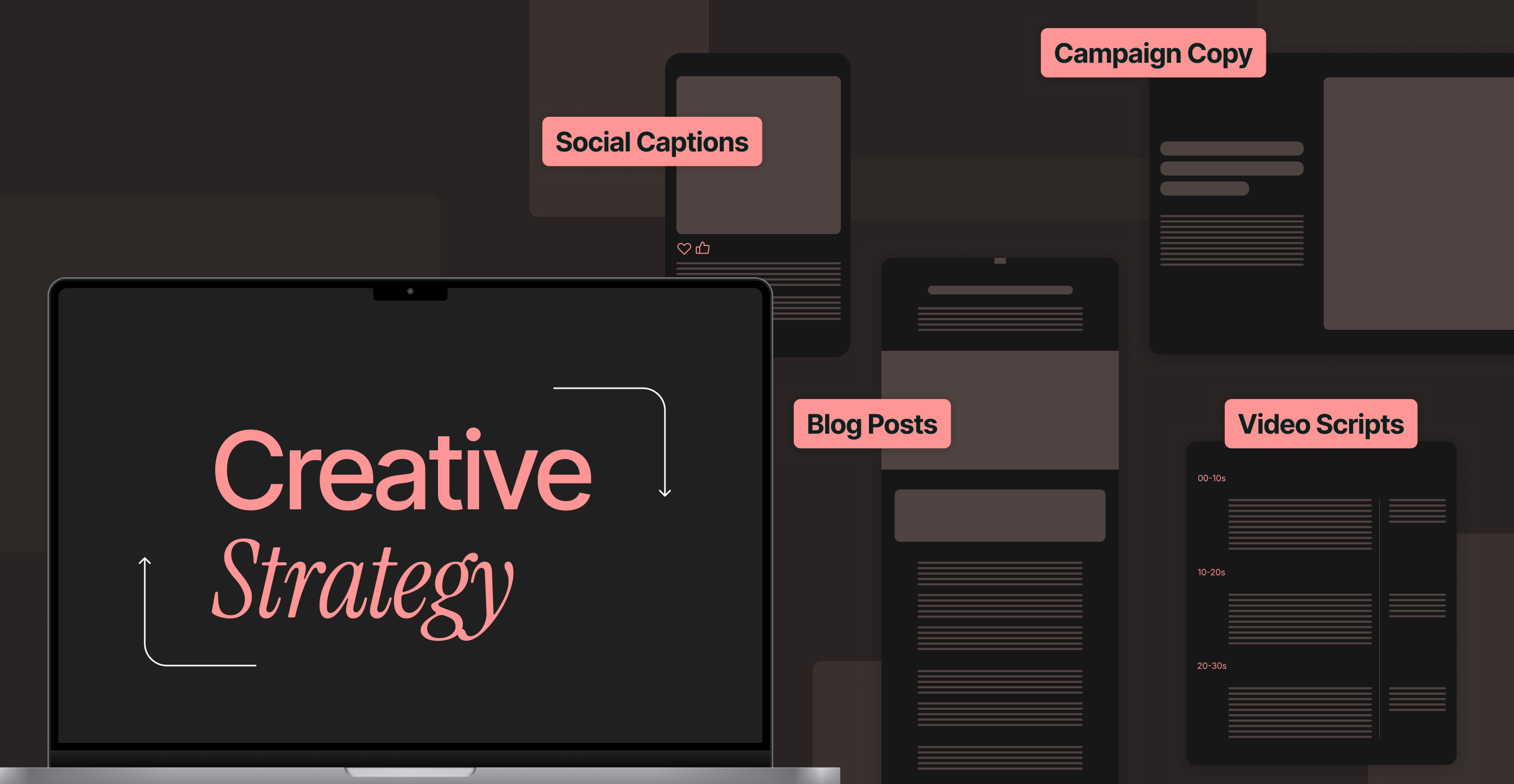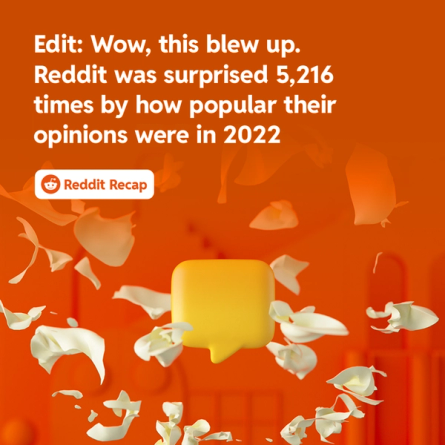Aging Ads? Stellar Creative is Your Secret Sauce

What can you do in 3 seconds? Think fast. That's as much time as you get to get a customer to stop scrolling and click on your ad. Not only that, the lifespan for digital ads is shrinking right along with attention spans. Time's up! Learn what you can do to stem the passing of time.
According to the Marketing Rule of 7, audiences must see an ad or campaign a minimum of 7 times before taking action.
Know when this rule came into play? It was 1930. Radio was in its prime and television was in its infancy. Fast forward (nearly 100 years!) to the digital era where the lifespan of your ads is shrinking at breakneck speeds—right along with attention spans.
The 3-Second Rule is the new sheriff in town—racing in on the backs of social media, display and the entire wild, wild west that is digital marketing.
Not only do you have less than three seconds to keep someone from scrolling right past your ads—audiences can easily see your messaging up to seven times in one day or even a few hours. (For comparison, the infamous 15 minutes of fame is 900 seconds.)
With automated targeting and other advances leveling playing fields, your marketing creative is your fountain of youth and holy grail.
Time is of the Essence
Without further ado, let’s get to it. Here’s what we’ll cover in this article.
What’s Ad Lifespan and Why Does It Matter?
The definition of “ad lifespan” is exactly what you’d instinctively think it would be. It’s how long an ad is viable or effective. Lifespan and the factors that affect it play a fundamental role in digital ad performance.
While paid acquisition embraced by performance marketers is one of the fastest ways to grow, it’s also one of the quickest ways to shorten the shelf-life of your ads. In fact, the more you increase your ad spend—especially in programmatic campaigns—the faster your ad performance drops.
When you understand the factors at play, you know what to watch for and, more importantly, how to respond.
With digital ad revenues surpassing $700 billion by 2025—you don't have the time or money to waste.
Why Digital Ads Have Such Short Lifespans
Legendary actor James Dean, famous for his role in the film Rebel Without a Cause died tragically in a traffic accident at the age of 24. The blink-of-an-eye lifespan for digital ads is no accident and the causes are well known. Time, attention and market factors are directly responsible for extinguishing a digital ad’s life force faster than it takes for the latest tips on AI to rank on Google.
Time slows for no man or digital ad
Over time, performance for any ad on any channel will decline. Unlike the bucolic days of broadcast and print campaigns, digital ad campaigns have much shorter lifespans because digital media is constantly changing and expanding. (#understatement)
Andrew Chen’s Law of Shitty Clickthroughs explains this eloquently.
According to this scatological phenomenon, while novelty invokes an immediate response, it fades just as quickly. First-to-market advantage never lasts because competitors are just as fast to follow your lead and copy your tactics. Finally, the more you scale your marketing efforts, the harder it gets to earn qualified leads as your early-adopter glory days fade into the sunset—along with your click-through rates (CTRs).
Can I have your attention? No, not really
With attention spans shrinking, it’s not only harder to capture someone’s attention, repetition, ad spend and exposure all have diminishing effects.
The more an audience sees the same ads over and over, the more ad fatigue becomes a factor and the more likely your ad will be ignored. In fact, you’ll start to see a drop in impact in as few as 3 views.
In one study, Meta found that mobile users were spending only 1.7 seconds on Facebook's News Feed content. And this was in 2016!
When marketers actively compete for increasingly fickle interests, audiences get saturated with so many different messages that they start to tune everything out.
Market forces that factor into how quickly your digital ads age
As if only having nanoseconds to capture someone's attention wasn't enough, the nature of your audience along with changes in market trends and consumer behavior can also impact how quickly your ads become ineffective. For example, if you're targeting smaller B2B audiences, it's even easier for ad fatigue and audience saturation to kick in. Or how dare you assume a millennial with Gen X?
Revamping Reddit's Year-End Project
Reddit Recap: Reddit wanted to recap the year's highlights and share them across its on- and off-platform marketing channels. Superside stepped right in—with turnarounds in 36 hours or less when needed and zero facepalms for frustrations. See our work for Reddit. And check out the 2022 Reddit Recap.
Celebrating Black History Month With Lawboss
Black History Month: Lawboss wanted to commemorate Black History Month. But instead of focusing on well-known names, they celebrated lesser-known heroes—like William Henry Johnson who, in spite of being born into slavery, became the first African American eligible to practice law. Superside helped concept and develop this and a second multi-channel campaign.
How You Can Fight The Effects of Aging Ads
Tracking metrics and paying close attention to your customers can help signal when your ads may have reached their golden years. However, the one variable with the most impact on campaign performance is the quality and cadence of your creative.
Monitor your vital signs—your performance metrics
Impressions, clicks, click-through rates, conversions, engagement rates and other performance metrics are the canaries in the coal mine for digital ad lifespans. To measure the performance and lifespan of your digital ads more effectively, consider using tools like Superads for comprehensive social paid creative reporting.
You’re the doctor and your ads are your patients.
Diligent and persistent measurement and analysis will show when effectiveness starts to decline. The more data you gather and the longer you’ve been doing it—the more likely you’ll also be able to detect key patterns that affect the health of your ads.
Know your customer (KYC)
Being aware of the size of your audience, their demographics and psychographics helps you identify which digital channels to target, what you need to say and if you can do so profitably by recovering your cost-per-acquisition (CPA).
One timeless truth: You never stop learning about your customers.
As most performance and social media marketers are away, each digital channel is quite granular. What works on LinkedIn won't fly, if at all, on TikTok. Being Insta-famous is different that being part of the Twitterati. In other words, there are written and unwritten rules that impact ad performance.
Social listening, reading the comments on your ads and keeping a constant ear to the ground for what's influencing your customers and where you reach them helps you stay ahead of the curve in a world where things can change in a split second or less.
Produce killer ad creative and lots of it! 🚀
Did we mention that you need to do this fast? Like some of your ads may have even passed while you read this sentence fast. 🔥
Measurement and how quickly you can see results—or lack thereof—is one of the main benefits of performance marketing. However, one of the biggest findings is that up to 75% of campaign performance is a direct result of the quality of the creative.
The need for impactful, persuasive creative has never been more urgent.
It's not just new creative. Ads must continually be refined and refreshed on a weekly and sometimes daily basis—and performance marketers must also keep testing and exploring new channels.
But wait! There's more...
In addition to recognizing and embracing trends like user-generated-content-style video (UGC-style video) and future-proof by integrating augmented reality (AR) and 3D techniques. Then there's the plot twist of knowing when to go against the grain.
Truth: As I'm writing this post, people have now started talking about using static ads to stand out against everyone who's running video. 🤯
⬆️ Hear Amrita Mathur, VP of Marketing at Superside, explain why the only way to really bring down your customer acquisition cost (CAC) and continually reach the same audience over and over is through using really great creative and testing that really great creative.
Keeping Ad Creative Flowing
For every action, there's an equal or opposite reaction. The more savvy performance marketers find ways to drive growth, the more creative they need. But unless you've built your perfect droid army and given them roles in your creative team, it's not humanly possible to keep up.
A majority of creative teams, 82% say demand for creative just keeps increasing. When you're versioning and testing multiple channels, it's a trend that's not going to change anytime soon.
When marketers can't get the performance creative they need, the potential for these concepts, refinements and experiments to fuel growth vanishes without a trace.
Create Growth With CaaS
As the lifespan of digital ads shortens, so does the window of opportunity for you to respond. Last time you checked, no one's effectively scaled telepathy... yet.
In the meantime, you need high volumes of creative at speed-of-light velocities. The flexibility to navigate ebbs and flows and pricing that's not out of this world would be nice too. Sounds like science fiction?
Sounds like you need Creative-as-a-Service or CaaS for short.
Superside has helped hundreds of brands, like Amazon, Reddit and Puma, scale high-octane creative, make the most of every dollar, and fuel growth. We fit seamlessly into your workflows, so you can get the creative you need, when you need it—on time, on-demand and on budget.
Ex-copywriter turned content strategist with two decades of creative chaos under her belt. She's helped scale content, brands and frozen pies—yes, really. Now? She empowers creatives to work smarter, not smaller.
You may also like these

More than a feeling: Inside a marketing-creative duo's data-driven mindset
Great campaigns don’t just look good—they perform. But getting creative to yield real business results requires more than just good instincts or a clever tagline.In today’s landscape, where every impression counts and attention is scarce, you need strategy. You need insight. And most importantly, you need alignment between the creative and the data.In other words, being data-driven is essential. For Andres Levinton, Co-founder at Superads, and Piotr Smietana, Director of Brand and Marketing Creative at Superside, this doesn’t mean choosing data over creativity—it means using both, intentionally. Levinton and Smietana dug into what that looks like in our latest guide, Inside Great Creative Partnerships, including: Why dashboards aren't everything
10 creative content agencies making brands shine in 2025
Enterprise content is everywhere, yet much of it fades into the background and fails to deliver results.A key challenge is that many brands still rely on predictable content formats and safe messages that don’t capture or sustain customer interest. With AI in the mix, the barrier to content production has dropped significantly. But this often results in output that feels bland, repetitive and, frankly, a bit robotic.At a time when millions of brands vie for your target customers’ attention, success hinges not just on a strong product or clever brand positioning but on content that’s creative, emotive and visually distinct.This is where top creative content agencies bring real value. They help enterprises leave an impression with fresh, innovative ideas, flawless execution and a consistent brand voice that builds trust and recognition.In this article, we dive into what these agencies do and why they’re vital for modern, performance-driven content marketing. We also showcase 10 trusted creative content agencies that can help your brand get the attention it deserves.
Formats that land: Inside a growth and brand team's recipe for results
There’s no singular formula for breakthrough creative.But if there’s a throughline, it’s this: The formats you choose matter as much as the message you’re trying to send. In an era where attention is currency, getting the right mix of video, visuals and content isn’t just a nice-to-have—it’s a growth imperative.To unpack what that mix looks like, we talked to Meg Gowell and Kevin Branscum, from Typeform’s growth and brand teams, and Darren Suffolk, from Superside’s video team for our latest guide: Inside Great Creative Partnerships. Bringing together both the creative and marketing perspectives, they shared: What success looks like across teamsWhy video (still) wins











